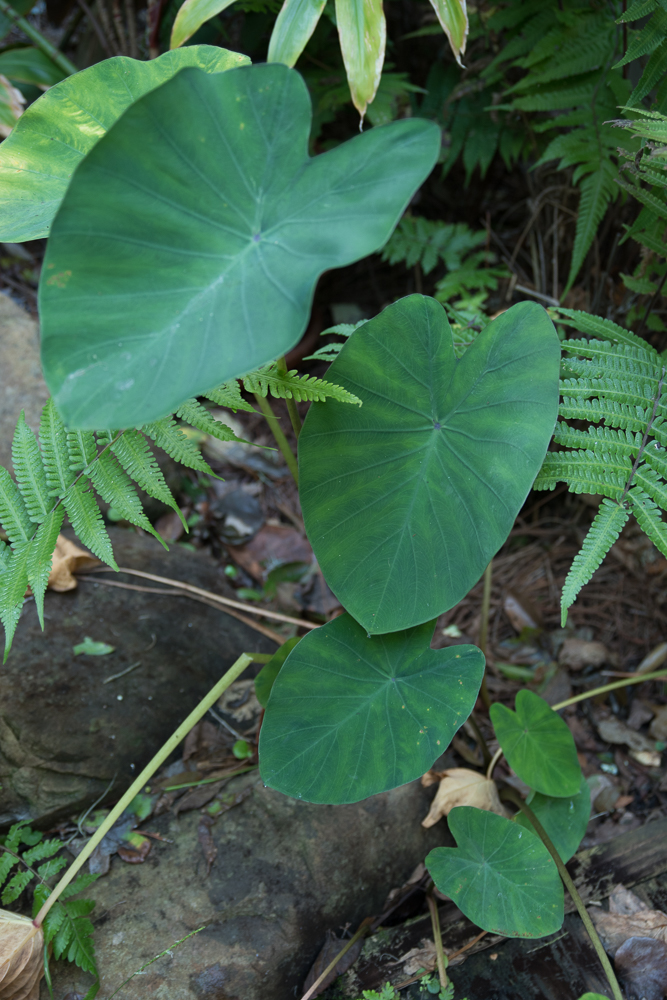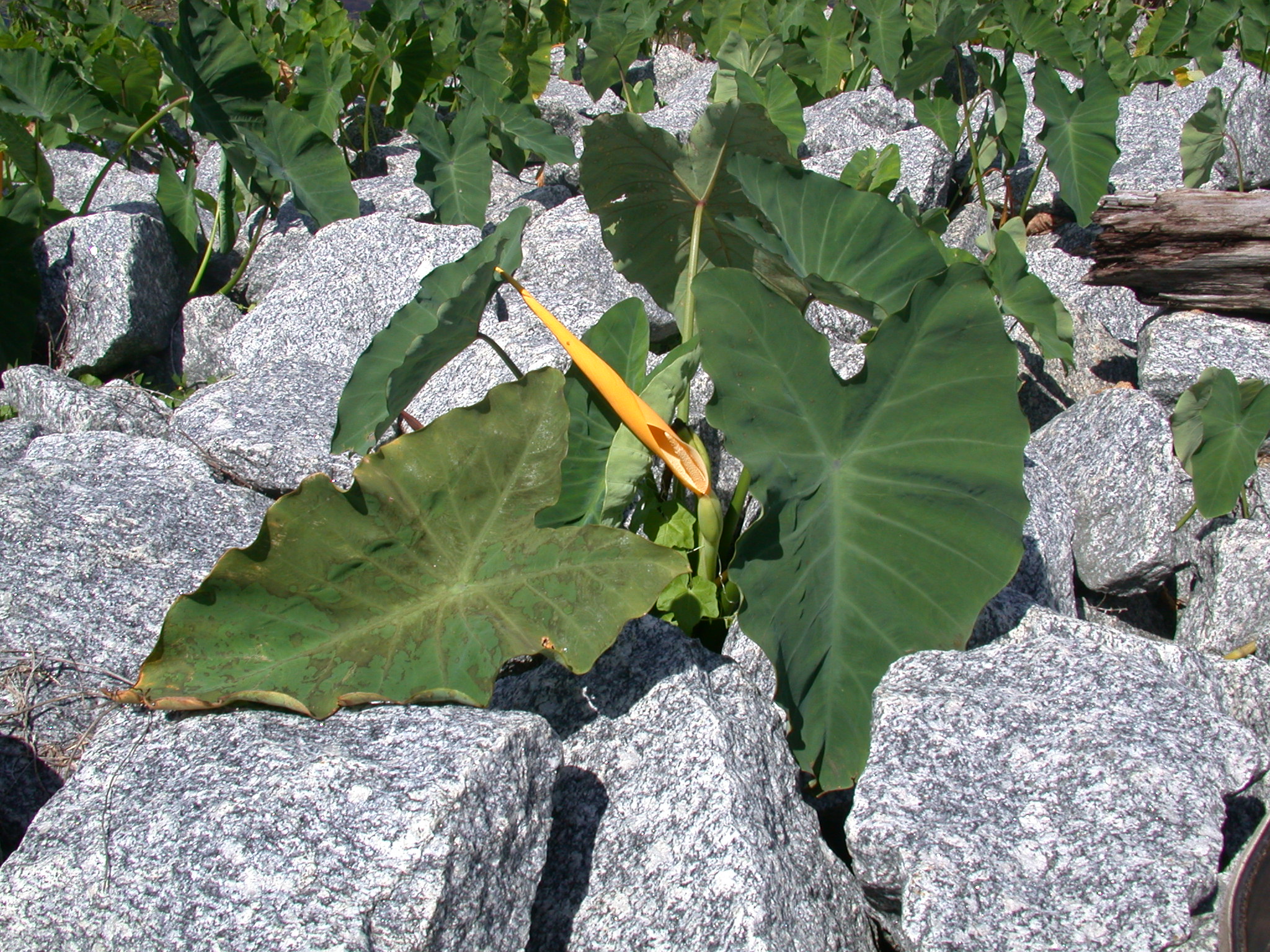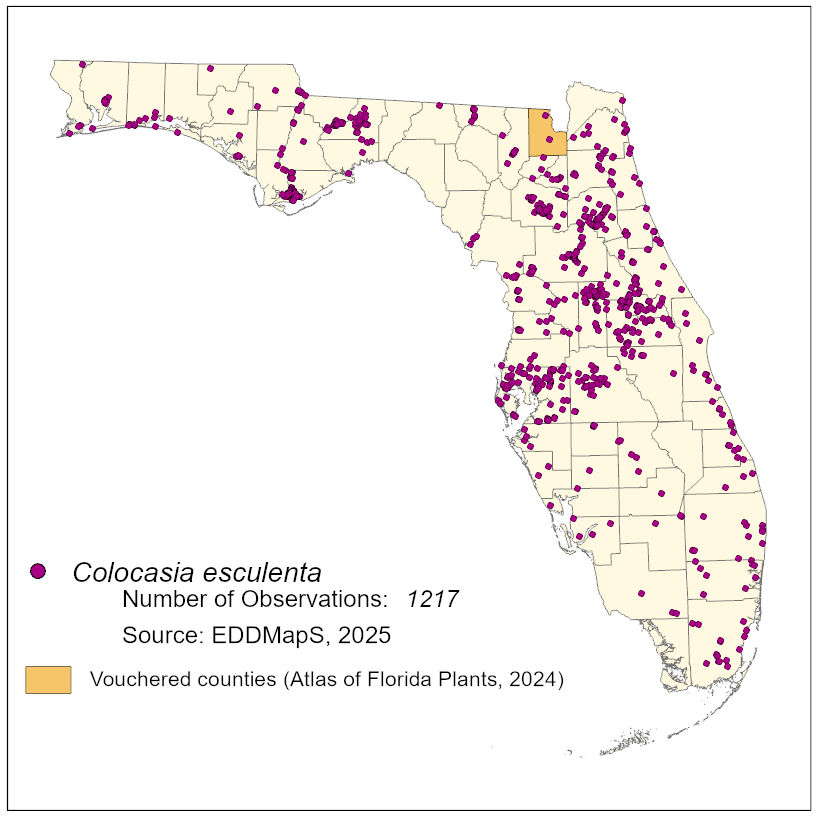Common Name: wild taro
Family: Araceae
Common Synonyms: none
USDA Hardiness Zone: 8a-11
Growth Habit: Perennial herb
Origin: Central and South America
FISC Category: 1
FDACS Listed Noxious Weed: No
Introduction Date: In the southeastern United States, it was introduced in 1910 by the Department of Agriculture as a substitute crop for potatoes.
IFAS Assessment:


Herbacous perennial with arrow-shaped leaves up to 1.2 m in length. Flowers infrequently, but consists of spade and spadix.
Wet to dry sites, but mostly in floodplain swamps, stream banks, and wet disturbed areas.
Introduced for its edible tubers. Wild taro resembles the invasive elephant's ear (Xanthosoma sagittifolium), which has sagittate leaves.

Limit planting and remove existing plants. Corms can spread via water. Use only aquatic labeled herbicides.
Greenwell AB, 1947. Taro - with special reference to its culture and uses in Hawaii. Economic Botany, 1:276-89.
Langeland, K.A., H.M. Cherry, C.M. McCormick, K.C. Burks. 2008. Identification and Biology of Non-Native Plants in Florida's Natural Areas-Second Edition. IFAS Publication SP 257. University of Florida, Gainesville, Florida.
IFAS, UF, Assessment of Non-Native Plants in Florida's Natural Areas. 2017. Colocasia esculenta. https://assessment.ifas.ufl.edu/assessments/colocasia-esculenta/Accessed September 18, 2017.
IFAS, Center for Aquatic and Invasive Plants. 2017. Colocasia esculenta. http://plants.ifas.ufl.edu/plant-directory/colocasia-esculenta/Accessed September 18, 2017.